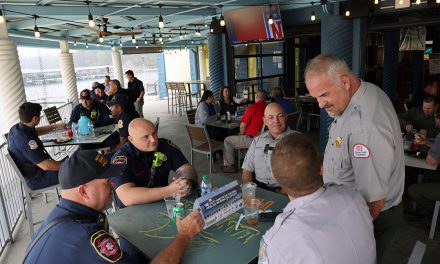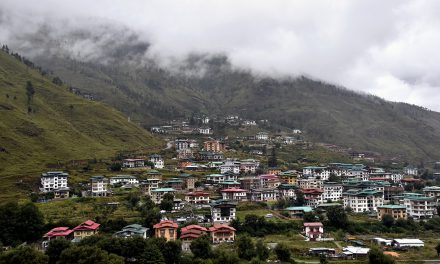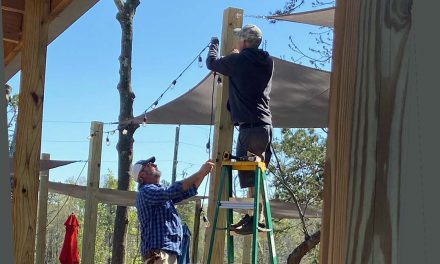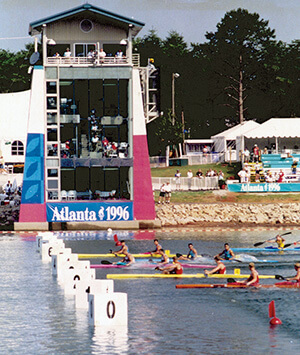
Action during the 1996 Olympics at Lake Lanier
Park is only venue still used for original purpose during 1996 Atlanta Games
It is a special place on Lake Lanier where a quarter-century ago the passionate pursuits of a community and international athletes crested with pride, medals and acclaim. Supporters of Lake Lanier Olympic Park, site of the 1996 Atlanta Olympics canoe/kayak and rowing events, are celebrating the 25th anniversary of the venue that brought the world to Lake Lanier. Created by community visionaries whose pleas for volunteers nearly always got a “Yes, I can,” the Olympic Park is still bringing the community together. And its waters still teem with athletes pushing for their best.
Those who worked to bring the Olympics to Lanier recall a near-magical time of collaboration and commitment. Gainesville attorney Steve Gilliam recently looked back at how excitement built from the moment the International Olympic Committee proclaimed in 1990, “It’s Atlanta!”
“It was a really exciting day when the announcement was made that Atlanta would be the host,” said Gilliam, whose civic-mindedness runs deep in North Georgia. “We put together a group to see whatever support we could give (Atlanta), never dreaming we could have a venue.”
‘It’s Lanier!’
Enter Jack Pyburn, a Gainesville architect and rower who knew a good stretch of water for rowing and paddling. Pyburn plied the oar that struck Gilliam and Gainesville banker and philanthropist Jim Mathis, Jr. Before 1992, the two forged Gainesville-Hall ’96 and the 45-member committee manned boats, met helicopters, negotiated around board tables, baked pies, and did what it took to get the nod from U.S. and international rowing and paddling organizations. Ultimately by the end of the year, the Atlanta Committee for the Olympic Games declared, “It’s Lanier!”
“It was very exciting … it kept building and building,” Gilliam said. “We put together committees to make it happen. People jumped on board to help us do whatever we asked.”
“It was the culmination of an awful lot of work,” said Mathis, who admitted he had never seen a rower in his life until he met with the U.S. Olympic Committee in 1991 at a regatta in Indianapolis. “It was the best cold call anyone could make,” he said, recalling how boosters set up easels with drawings to show sport officials what a Lanier venue could look like. “We really wanted the governing bodies of each sport to like us,” he said. Volunteers wooed Olympic organizers with friendship and hospitality and backed it up with a workforce and venue like none other in the state.
‘We have water, they don’t’
Mathis related that early on Conyers, Ga., made a pitch to host Olympic rowing and paddling on an imagined lake, yet to be built. “I got a quart jar of Lake Lanier water and put it on (an Olympic organizer’s desk) and told him, ‘We have water, they don’t.’ It worked!”
Mathis said his fondest memory is the community spirit that brought 2,000 people together. “Everyone jumped in and helped and wanted to be a part of it. That’s what was so fulfilling about it.”
Mary Hart Wilheit energetically heeded the Olympic call from Gilliam and Mathis. “They knew I was organized,” she said, and they needed her skills. She described a frenzied, yet orderly few months of meeting with individuals and groups. When the Atlanta committee flew in by helicopter, “I was waiting with coffee and cookies,” she said.
“I can’t believe it’s been 25 years,” said Gainesville businessman Gary Gaines, founder of the Lanier Canoe & Kayak Club and boathouse manager during the Olympics. “It was a great time. It’s easy to think now about the excitement, but it was also lots and lots of hard work.”
He recalled the grunt work opening the boathouse every morning at 6 a.m. for the athletes and sweeping up the celebratory (or tear-drenching) bottles and cans after they departed. “I did whatever the athletes needed and got to know almost all of them.”
“I met a lot of nice folks and still see some of them at events,” Gaines said.
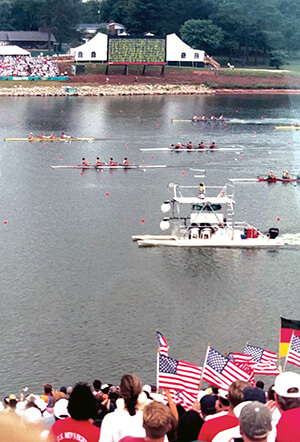
Flag-waving was a large part of the spectator experience at 1996 Olympic events on Lake Lanier
Clubs continue tradition
Through the years, athletic and community events have continued at the park, now known for much more than its Olympic legacy. High profile canoe/kayak and rowing competitions fill the permanent grandstands, constructed in the early 2000s for a 2003 international canoe/kayak regatta. Concrete and stone replaced the temporary bleachers originally installed across the channel from the current grandstand. Even during a period of decline and rotting boat docks a decade after the Olympics, national and international rowing and canoe/kayak teams kept coming. The local canoe/kayak and rowing clubs kept the torch lit with youth teams, lessons, camps, and regattas. Paddlers who trained there aspired to be Olympians, with two eventually being picked to represent the U.S. But the venue’s founders and others who later got involved with it knew it had wider potential.
“It’s been a journey with one of my favorite places,” said Mimi Collins, who in 2013 began her tenure as leader of the current Lanier Park Foundation. The former GH ’96 revitalized early that year and under Collins’s leadership hired a venue manager, started an ambitious renovation campaign and got private and government funding. New crowds came as folks discovered the lakeside venue. LLOP won broader community endearment with an expanded culture that includes concerts, festivals, weddings, wakeboard competitions, and Food Truck Fridays. Collins noted that even a Lanier boating community that once opposed activities at the park that shut down boat ramps now embraces it. “They love the new courtesy docks,” she said.
Transformation ‘amazing’
Collins described the transformation as “amazing.” She recounted some of the milestones since 2014: the foundation took over daily park management and completed $2 million in renovations at the tower, plaza, office/concession stand with public and private funding; an Olympic canoe/kayak qualifier brought international paddlers back in 2016; the city of Gainesville annexed the 35.5-acre park, put it in the hands of the Gainesville tourism department, and provided funding through the city hotel/motel tax.
According to Gainesville tourism officials, LLOP has become the city’s top tourist attraction, bringing in 200,000 visitors annually for an economic impact of about $5 million. The plaza and grandstands overlooking the Olympic channel afford a unique outdoor setting above the water. Crowds flock to grab grub and groove to live music at Food Truck Fridays. Guitar twangs and drumbeats compel concert-goers out to dance on the plaza. Brides and grooms say “I do” in the medal winners’ circle. Organizations and businesses gather for out-of-the-office meetings with near panoramic views of the lake in a glass room inside the finish tower.
The sporting world still looks approvingly at the near 2,000-meter straight channel, the evolving park, and welcoming community that brought the Olympics to Lanier. LLOP’s latest crown came with the NCAA announcement last year that it will bring its 2026 women’s rowing championship there. Mathis said he is most proud that rowers and paddlers still ply the waters where the community brought the Olympics.
“The Olympic legacy at LLOP is amazing,” said Robyn Lynch, Gainesville tourism director and former Lanier Foundation executive director. She added “it was the dream of Gainesville Hall ’96” to see the park shine as a community gem.
“One of the things we wanted to do was create sustainability,” Gilliam said. He and others involved in the Olympic movement are joyous that the park has risen to meet their vision as a treasured jewel on Lake Lanier. “I’m so happy,” Mathis said, about the state of LLOP more than 25 years after its founding.
“I think it’s wonderful (the Lanier Foundation) has kept it going,” said Gaines, adding it could have easily turned into another defunct Olympic venue. “My hats off to (the Lanier Foundation) for realizing the potential. It’s definitely worth keeping going.”
Photos: by Alan and Vicki Hope


